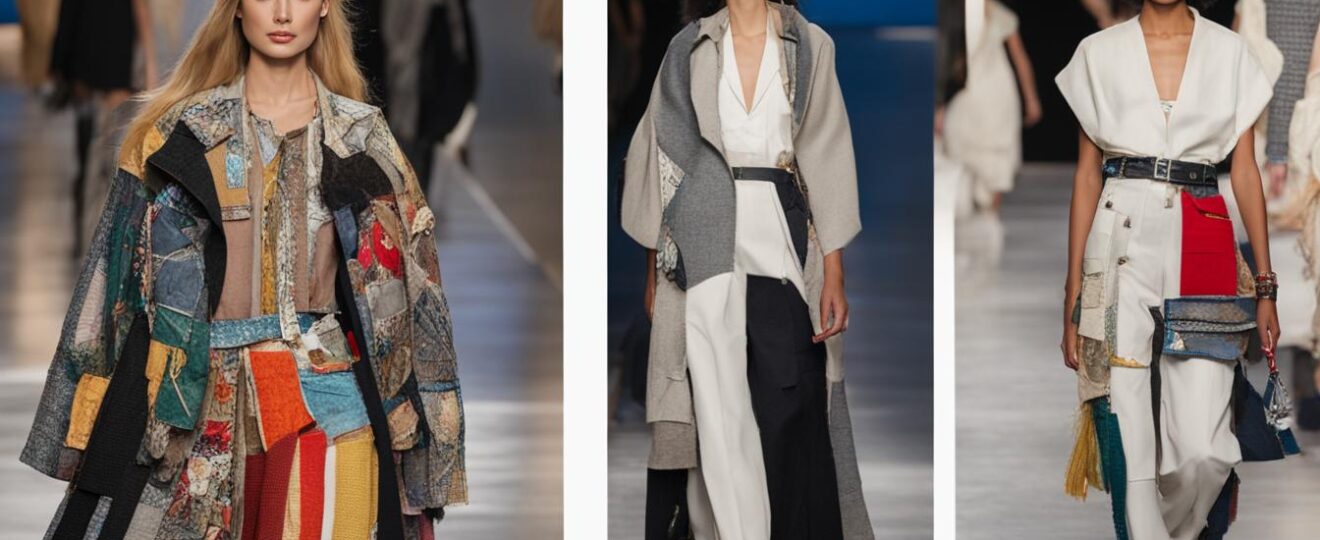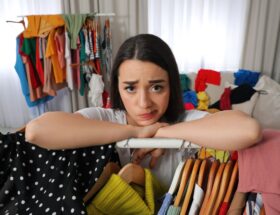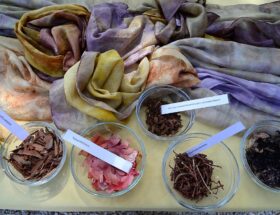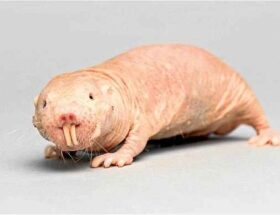Are you on the journey to transform your closet into an oasis of eco-friendliness but feeling a bit overwhelmed about where to begin? You’re definitely not alone. It seems like so many of us are yearning for that change, especially when we hear that two-thirds of consumers are digging deeper into their pockets for sustainable options. Sustainable fashion trends are here to stay and there are a ton of ways we can all contribute to this positive change.
In this post, I’m excited to share some hot-off-the-press sustainable fashion trends with you. These will not only point you in the right direction toward more environmentally conscious clothing choices but also inspire your style.
So let’s roll up our sleeves and join forces to make fashion synonymous with positivity and care for our planet!
Quick and Easy Navigation
The Consumer Drive for Sustainable Fashion
Consumers today are increasingly demanding ethical practices in fashion. They seek transparency from brands about their supply chains and how their clothes are made. There’s a strong wave of awareness, with people looking closely at where materials come from and who makes the garments they wear.
This shift in consumer behavior is pushing the entire industry towards more sustainable and responsible production methods.
The quest for sustainability in fashion is not just a trend – it’s a movement driven by informed individuals who care deeply about the planet’s future and ethical considerations within the apparel market.
Increased Demand for Ethical Practices
I care a lot about where my clothes come from and how they’re made. More people do too. They want to buy things that are good for workers and the Earth. This means looking for fair-trade labels, organic cotton, and less pollution from making clothes or shipping them around.
It’s not just about looking great anymore; it’s also about feeling good knowing you’re helping make things better.
Big changes are happening because we all want nicer ways to shop for fashion. We ask questions like “Who made this?” and “Is it hurting the planet?” Brands have to answer us with truth now.
And many new kinds of materials are popping up that don’t harm nature as much—which is awesome!
Plus, when I pick these ethical choices, I’m joining lots of others in fighting against stuff like global warming and water waste by doing something cool—wearing amazing outfits!
Desire for Transparency in Supply Chains
People want to know where their clothes come from. They ask for clear information about how companies make their fashion items. This means they want brands to be open about the whole process: from the design stage all the way to when they sell it in stores or online.
Knowing this helps buyers choose clothes that match their values, like caring for workers and the planet.
Brands are starting to show more about their supply chains because customers are asking for it. They use tags on clothes that tell the story of who made them and where. Some even share details on social media or their websites about how they keep things fair and safe for people making the clothes.
This helps everyone feel good about what they buy and wear.
Know your clothes certifications
5 Trends Shaping Sustainable Fashion
Trends are morphing the sustainable fashion landscape in 2024. We’re seeing a surge in circular economy practices, with more brands upcycling discarded materials into fresh style statements.
The second-hand and rental markets are booming, offering eco-conscious alternatives to fast fashion’s fleeting allure. People are ditching excess for slow fashion principles — curating minimalist wardrobes that emphasize quality over quantity.
There’s excitement around new sustainable materials; companies are investing in fabrics that lower our carbon footprint while maintaining high-end appeal. Moreover, cruelty-free and vegan options no longer sit on the fringes but have become mainstream preferences among those striving for greener fashion choices.
1. Embracing the Circular Economy and Upcycling
I care a lot about our planet. So, I love that more people are choosing to embrace the circular economy and upcycling in fashion. Here’s how it’s making a difference:
- Old clothes get a new life. Instead of throwing away worn – out clothes, they can be turned into something new and cool.
- Less waste in landfills. When we upcycle, we keep stuff out of the dump and use less resources.
- Creative designs pop up. Designers are getting super creative by using old materials to make fresh, unique fashion pieces.
- Saving water and energy. Making new clothes from scratch takes lots of water and power. Upcycling cuts down on this big time.
- People learn more about recycling. When we see upcycled clothes, it teaches us about how recycling works and why it matters.
- We reduce our carbon footprint. By upcycling, we help cut down on greenhouse gases that come from making new fabrics.
- Companies make less pollution. Fashion brands that use upcycled materials don’t pollute the air and water as much.
2. Growth of the Second-hand and Rental Markets
More people today want to be kind to our Earth. They choose to wear clothes that are used or rented instead of buying new ones.
- Second – hand shops are getting more popular. People can find cool, unique pieces without hurting the planet.
- Websites and apps make it easy to buy and sell used clothes. Places like ThredUp have lots of choices for everyone.
- Renting clothes is now a big thing. Companies like Rent the Runway let you wear fancy dresses without buying them.
- Stores like H&M and M&S are putting rental clothes on their websites. This way, you can borrow clothes instead of owning them.
- Fashion events show off clothes that are borrowed or second – hand. They want everyone to see how stylish reused fashion can be.
- People share their rented outfits on social media platforms. They show how you can look great and care for the Earth at the same time.
- Second – hand clothes help us use less water and create less waste. When we pick these items, we make a big difference in saving resources.
- The second – hand market is growing really fast, much quicker than regular stores selling new clothes.
- More money is being made from selling used things than ever before. By 2030, it could be worth $84 billion!
- More folks think this way now – living with less but better quality stuff. It’s cool to have a closet with just a few things you really love.
3. Adoption of Slow Fashion and Minimalist Wardrobes
I love keeping my closet simple. It feels good to choose clothes that last a long time and don’t hurt the planet.
- Picking fewer, better clothes: I focus on quality over quantity. This means buying well-made items that won’t fall apart quickly.
- Timeless over trendy: I choose classic looks that don’t go out of style fast. This way, I don’t feel the need to buy new stuff each season.
- Loving what I have: I take care of my clothes by washing and fixing them. It makes them last longer and saves money and resources.
- Sharing and swapping: Sometimes, I trade clothes with friends or family. It’s like getting new things without buying anything!
- Waiting before buying: When I see something I like, I wait a few weeks before getting it. If I still want it, then it might be worth it.
- Eco-friendly materials: When shopping, I look for items made from organic cotton or recycled fabrics which are kinder to the earth.
- Avoiding fast fashion traps: Big sales and cheap deals can be tempting, but they often lead to waste. So, I skip them unless it’s something I really need.
- Second-hand shopping: Thrift stores are treasure troves! You can find unique pieces without causing more demand for new resources.
- Mindful purchases: Every time I think about buying something, I ask if it fits my needs and values. If not, back on the shelf it goes!
- Supporting slow fashion brands: Brands that care about how they make clothes get my support because they respect people and the planet.
4. Innovations in Sustainable Materials
Fashion is getting a makeover with cool new materials. Imagine wearing sneakers made from ocean plastic or rocking a purse that used to be a water bottle. Designers are now using pineapple leather and mushroom textiles too.
These fresh fabrics help the planet by cutting down on waste and harmful stuff like chemicals.
People also love clothes that come from nature but don’t hurt it—like organic cotton, hemp, and linen. Best of all, when you’re done with them, these materials can break down and go back into the earth safely.
It’s smart fashion that feels good for both you and the environment.
5. Cruelty-Free and Vegan Fashion Options
I love that we can wear amazing clothes without hurting animals. More people want fashion that doesn’t involve cruelty. It’s great to see materials like pineapple leather and mushroom textiles pop up in stores.
These new fabrics are kind, look cool, and show care for our planet.
It makes me happy to see so many choosing vegan shoes, bags, and dresses. The idea of wearing something not made from animal parts feels good. Shops are getting better at making these choices easy to find.
Everyone wins when fashion is both beautiful and kind to all living things!
Technology’s Role in Sustainable Fashion
In the realm of sustainable fashion, technology is a game-changer. It’s reshaping how we produce and consume apparel with groundbreaking tools and platforms. I’m especially intrigued by the way digitization is carving out a new path for interactions between brands and consumers.
Gone are the days of one-size-fits-all; virtual fittings now offer personalized experiences that reduce returns and waste. Moreover, data analytics and AI aren’t just buzzwords—they’re critical in predicting trends, optimizing energy consumption, and cutting down on excess production.
Sustainability isn’t only about materials; it extends to operational efficiency too. Through my mouse clicks online shopping becomes smarter with cookie trails that allow retailers to understand our preferences while minimizing carbon emissions from unnecessary shipping.
But let’s not forget about transparency—technology enables brands to peel back the curtain on their supply chains like never before, giving both them and us valuable insights into ethical practices at every step.

Digitization and Virtual Fittings
Fashion is getting smart with tech. Now, I can try on clothes without even touching them! Virtual fittings let me see how jeans or dresses look on my screen. This way, stores don’t have to make lots of samples that might get thrown away later.
They just create digital versions and show customers. It’s a win-win because this saves water and cuts down waste.
Stores also use digitization when designing new outfits. Instead of making lots of physical samples, they design them on computers first. This means using less fabric and energy before the final piece is made.
So more trees stay put, and less carbon dioxide goes into the air – all thanks to fashion going digital!
Use of Data and AI for Sustainability
Savvy people are using data and AI to help the planet. AI can look at how clothes sell and what shoppers like. This helps make less waste because stores only make what people want to buy.
Also, designers are making digital samples instead of real ones. This saves fabric and is better for the environment. It’s pretty neat how computers help us take care of our world while we enjoy cool fashion!
Incorporating Sustainable Fashion in Retail
As a savvy shopper who cares about the planet, I’m thrilled to see retailers curating collections with sustainability at their core. They’re not just selling clothes; they’re educating us on making eco-friendly choices that align with our values.
It’s refreshing to walk into a store and see the emphasis on green practices, from in-house recycling programs to sourcing materials with minimal environmental impact. The shift towards incorporating sustainable fashion is more than just a trend—it’s retail taking responsibility for its footprint and leading by example!
Curating Collections with a Conscience
Retailers are choosing to curate their inventory with clothes that are kind and good for the Earth. This means choosing items that don’t harm people or nature. They look for clothes made without hurting anyone and with things that can be used again, like organic cotton or recycled plastic.
To do this right, they work with suppliers who also think caring for our planet is important. They show them how they make things and where their materials come from. This helps retailers pick the best pieces that are stylish yet gentle on our world for their store’s collection.
Educating Consumers on Sustainable Choices
I love wearing cool clothes, but I care about our planet too. That’s why I learn and share ways to choose fashion that’s good for the Earth.
Here are some smart moves we can all make:
- Look for clothes made with materials that don’t harm the environment. This means stuff like organic cotton or recycled fabrics.
- Check if a brand is being honest about being green. Sometimes companies pretend to be eco – friendly when they’re not. That’s called “greenwashing.”
- Go slow with fashion. Buy fewer clothes and pick ones that last longer, instead of getting lots of cheap things that you throw away quickly.
- Share information about how making clothes can use a lot of water and create pollution. This helps people understand why choosing green fashion matters.
- Support shops that sell second – hand clothes or let you rent an outfit. This helps stop so much waste because we reuse stuff instead of always buying new.
- Ask brands to explain how they make their clothes and where the materials come from. We have the right to know this stuff.
- Give a thumbs up to brands that take care of their workers and pay them fair wages.
- Tell friends about cool sustainable clothing you find. It’s fun to share good finds with your pals!
- Use apps on phones or computers that help track how green a brand is before you buy their stuff.
- Remember that even small choices add up! Each time we pick an eco – friendly shirt or dress, it helps our planet a little bit more.
Conclusion
Sustainable fashion is changing the way we dress and care for our planet. People want clothes that do good, last long, and tell a fair story from start to finish. Smart tech helps us make better choices and buy what fits right.
We’re in for a future where our outfits match our values, one stitch at a time. This shift isn’t just cool; it’s necessary – for us and the earth.









